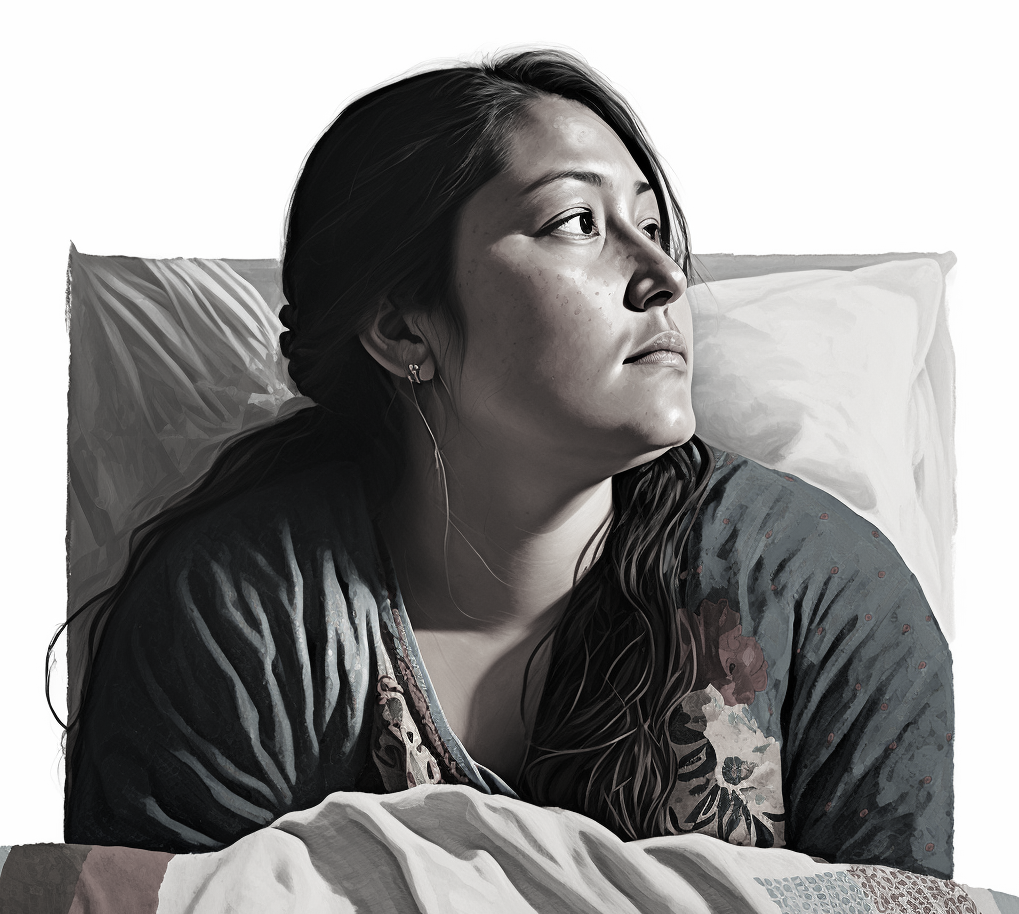Obsessive-Compulsive Disorder (OCD) can be challenging to recover from for various reasons.
My name is Sarah, and I’m a 33-year-old woman living with OCD. Every day, I’m bombarded by intrusive thoughts and the urge to perform rituals to ease my anxiety. My life feels like a never-ending cycle of obsessions and compulsions.
I often feel isolated because people don’t understand my condition. Misconceptions about OCD make it hard for me to open up, and the stigma weighs me down. It’s difficult to establish meaningful connections when my obsessions consume so much of my time and energy.
I’ve tried seeking help, but finding the right treatment has been challenging. I’ve encountered therapists who don’t fully understand OCD, leading to ineffective treatment methods. My progress has been slow, and setbacks are frequent.
My OCD also seems to run in the family, which makes it harder for me to overcome. This link feels like an unshakable burden. I’m constantly worried that even if I make progress, I’ll always be at risk of relapsing.
Sarah
It’s important to note that individual experiences with OCD may vary, but some common factors that contribute to its persistence include:
- Neurobiology: Our brain chemicals play a huge role in OCD, particularly serotonin, which regulates mood and anxiety. Imagine trying to calm a storm in your head; that’s what balancing brain chemistry can feel like for those with OCD.
- Genetic factors: Sometimes, OCD can run in families like a passed-down trait. If your relatives have OCD, you might have a harder time overcoming it too.
- Anxiety and fear: When fear and anxiety show up, they fuel the fire of obsessions and compulsions. It’s like adding fuel to a bonfire, making recovery even more challenging.
- Habituation: Breaking habits can be tough, especially when you’ve relied on compulsions to cope with distress. Imagine trying to quit your go-to stress-relief method cold turkey.
- Cognitive distortions: OCD can create twisted thought patterns. For example, you might believe that not checking the stove will cause a fire. These distortions make it harder to break free from obsessions and compulsions.
- Co-occurring disorders: Many individuals with OCD also deal with other mental health conditions, like depression or anxiety. Juggling multiple conditions can complicate recovery.
- Insufficient or inappropriate treatment: Imagine trying to navigate a maze with a faulty map. That’s what recovering from OCD can feel like without proper treatment, which often includes medication and cognitive-behavioral therapy.
- Stigma and misconceptions: Stigma and misunderstandings about OCD can make people feel isolated, making it harder for them to seek help or discuss their experiences openly.
- Lack of support: A strong support system is crucial for recovery. Without understanding friends or family, it can be harder for individuals with OCD to overcome their challenges.
- Chronic nature of the disorder: OCD is often a long-term condition. While treatment can help manage symptoms, there’s no guaranteed cure, and relapses may occur. It’s like an ongoing tug-of-war between managing symptoms and staying on track with recovery.
It’s not all bad, though
Here are some reasons that may make OCD more manageable compared to other mental health conditions:
- Well-established treatments: The treatment methods for OCD, including medication and cognitive-behavioral therapy (CBT) with exposure and response prevention (ERP), have a robust evidence base and are widely recognized as effective. This can make it easier to find appropriate care and resources compared to some other mental health conditions with less established or specialized treatments.
- Clear therapeutic goals: OCD treatment often has specific and measurable goals, such as reducing the frequency and intensity of obsessive thoughts and compulsive behaviors. This can make it easier for individuals and their therapists to track progress and adjust treatment as needed, compared to some disorders where progress might be more subjective.
- Tangible symptoms and behaviors: OCD symptoms, such as compulsions, are often observable and can be directly addressed in therapy. This might make treatment feel more concrete and actionable compared to some other conditions, where symptoms might be more abstract or internal.
- Strong support networks: There are numerous support groups, both online and offline, specifically dedicated to helping individuals with OCD. This can make it easier to find understanding and guidance from others who share similar experiences compared to some conditions with smaller or less organized support networks.
- Increasing awareness and education: OCD has gained significant attention and awareness in recent years, leading to better understanding and acceptance of the condition. This increased visibility can help reduce stigma and make it easier for individuals to access information and resources compared to lesser-known mental health conditions.
- Potentially faster response to treatment: Some individuals with OCD may experience significant symptom reduction relatively quickly once they begin appropriate treatment. This can make managing OCD more feasible compared to some other mental health conditions that might require longer periods of treatment to see substantial improvements.
Keep in mind that each individual’s experience with OCD and other mental health conditions is unique, and what may be more manageable for one person might be more challenging for another.











